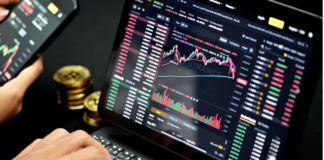The recent dynamics in the Treasury market, marked by a surge in long-term yields despite the Federal Reserve’s aggressive rate cut, present a fascinating yet potentially concerning scenario for investors. The emergence of a bear steepener in the yield curve, characterized by a widening gap between 10-year and 2-year Treasury yields, merits close scrutiny as it hints at a complex interplay of market expectations and economic realities.
Market’s Premature Easing Bets
The bond market’s initial reaction, with long-term yields declining sharply in anticipation of the Fed’s move, suggests a degree of over-optimism. It seems market participants had priced in a more aggressive easing cycle than what the Fed ultimately delivered, even with the substantial 50 basis point cut. This misalignment between market expectations and the Fed’s guidance has contributed to the subsequent surge in long-term yields, as the reality of a more gradual easing path sets in.
Inflation Fears and Fiscal Concerns
The bear steepener also reflects growing concerns about inflation. The Fed’s willingness to tolerate higher inflation, coupled with worries about the U.S. fiscal situation and its potential impact on long-term borrowing costs, are contributing to this sentiment. Market participants are increasingly factoring in the possibility that persistent inflation and a mounting debt burden could push long-term interest rates higher, regardless of the Fed’s actions.
Implications for Investors
The current market environment calls for a cautious approach. The bear steepener signals a potential shift in market sentiment, with rising inflation expectations and fiscal concerns taking center stage. Investors should pay close attention to the evolving dynamics in the Treasury market and their implications for different asset classes.
- Fixed Income: The potential for further increases in long-term yields could negatively impact bond prices, particularly those with longer durations. Investors may consider focusing on shorter-duration bonds or exploring alternative fixed-income strategies to mitigate interest rate risk.
- Equities: Rising inflation expectations and potential economic headwinds could weigh on equity valuations. Investors may need to adopt a more selective approach, focusing on companies with strong fundamentals and pricing power.
- Real Assets: Assets like real estate and commodities, which often act as inflation hedges, could become increasingly attractive in the current environment.
Conclusion
The emergence of a bear steepener in the Treasury yield curve underscores the complex interplay between market expectations, Fed policy, and macroeconomic realities. While the market’s initial exuberance following the Fed’s rate cut has subsided, the underlying concerns about inflation and fiscal sustainability remain. Investors should navigate this evolving landscape with caution, adopting strategies that align with their risk tolerance and investment objectives.
Disclaimer: The information provided in this analysis is for educational and informational purposes only and should not be construed as financial advice. Investing involves risks, 1 and past performance is not indicative of future results. Please consult with a qualified financial advisor before making any 2 investment decisions.















